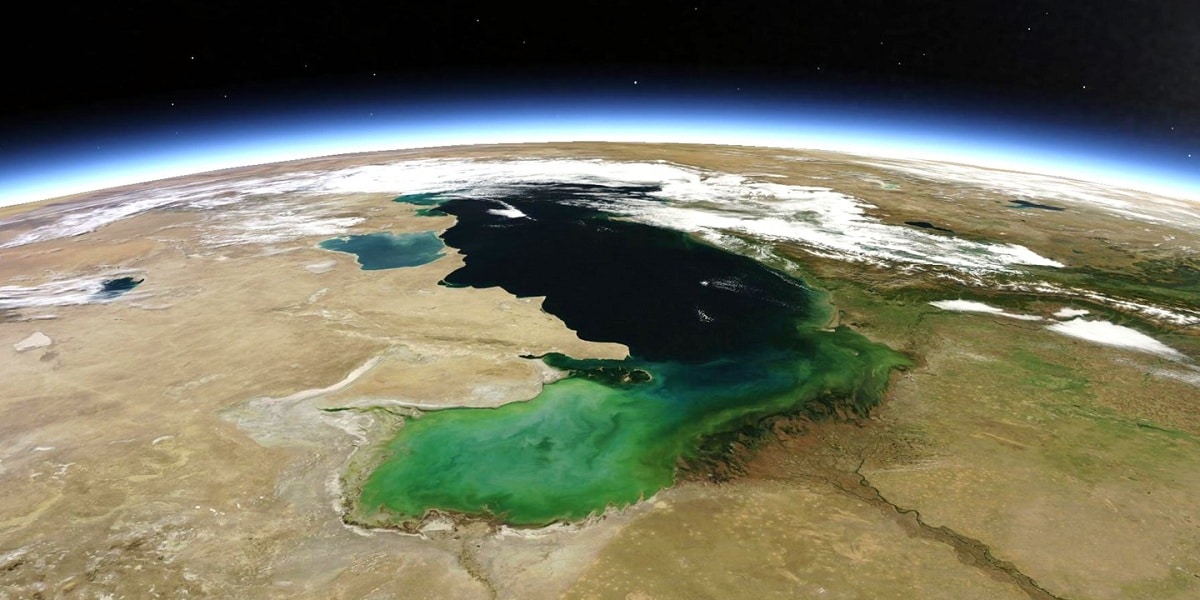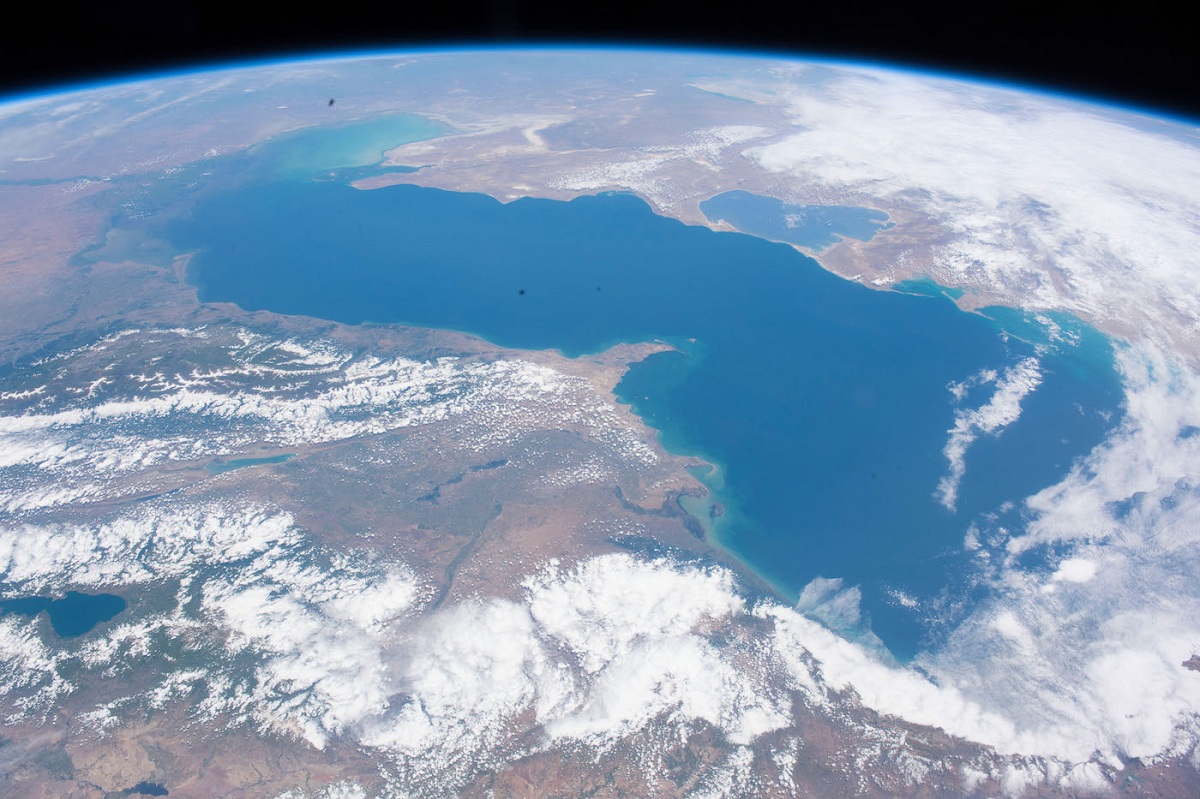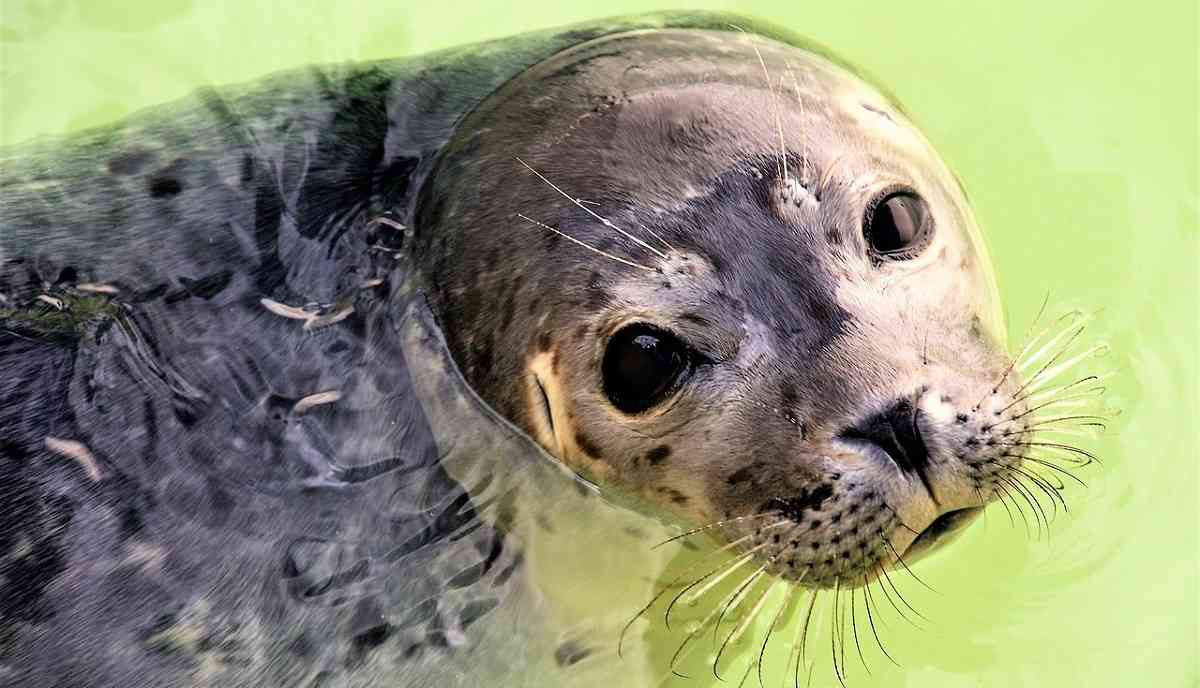
Today we are going to talk about a sea that receives this name but which is an endorheic lake of brackish water. Its about Caspian Sea. The Caspian Sea is a body of water that is completely surrounded by land and without any direct outlet to the sea or ocean. Therefore, if we follow the definition given in geology, it is a side and not a sea. It has a certain level of salinity and is classified as the largest inland lake or endorheic basin in the world. At the same time, it is considered the smallest sea in the world.
Therefore, we are going to dedicate this article to tell you all the characteristics, geology and curiosities of the Caspian Sea.
Key features

When considering the Caspian Sea or lake, one must also look at the legal aspect. For example, if it will be considered a sea by the countries that limit it, and the natural resources that exist in its funds would be the property of the coast of each country. Otherwise, if we are talking about a lake, the bottom resources will be divided equally between the riparian countries.
The Caspian Sea lies east of the Caucasus Mountains in a deep depression between Europe and Asia. We are roughly 28 meters below sea level. The riparian countries surrounding the Caspian Sea are Iran, Azerbaijan, Turkmenistan, Russia, and Kazakhstan. This sea is made up of 3 basins: central or middle north and the southern basin.
The first basin is the smallest since it only covers little more than a quarter of the total area of the sea. It is also the shallowest part that we can find in this area. The central basin has a depth of around 190 meters, which allows the existence of a greater quantity of natural resources, although the deepest is in the south. The southern basin holds 2/3 of the total volume of water in the Caspian Sea.
The total width of this sea is on average about 230 kilometers. At the widest point it is capable of measuring 435 kilometers and its maximum length is approximately 1030 kilometers. The deepest part is an area where the terrain abruptly rises to a depth of 1.025 meters. The approximate total area of the sea is 371000 square kilometers with a water volume of 78.200 cubic kilometers. It can be said that this sea contains more than 40% of all the continental waters of the world. Although it does not have an outlet from the sea, there was no ocean is fed by multiple rivers that flow into it.
Among the most important rivers that flow into this sea we highlight the Ural, the Térek, the Atrak and the Kurá. This is one of the reasons why it is known as the sea since there are many rivers that flow into it.
Formation of the Caspian Sea
The waters of this sea are slightly salty, although only about a third of the salinity of ocean water. This is due to the percentage of water that evaporates since it is quite high in some areas.
When the evil called Paratetis was formed about 5.5 million years ago, it lost its connection with the sea and was totally isolated after a decrease in the water level and the lifting of the earth's crust that formed nearby mountains. These mountains are the Caucasus and the Elburz. At the beginning of the formation of the Caspian Sea, it formed a single basin together with the Black Sea and reached its maximum extent during the time of the Paleocene. It was then during this time that a great elevation of the Caucasus mountains was experienced that favored the separation of the basin into two different bodies. This caused the Caspian Sea to be completely isolated.
Biodiversity and threats of the Caspian Sea

As you might expect, the Caspian Sea is part of a large amount of biodiversity. In it there are more than 850 species of animals and more than 500 species of plants Thanks to these unique formation conditions, it has been declared that approximately 400 endemic species of animals are housed and many more that coexist in the deltas of the rivers and the coasts.
Some animal species that we can find in the Caspian Sea are: the seal, being one of the most iconic animals since they are not found anywhere else on earth since it is an endemic species. We also have a large number of fish such as perch, pike, herring, castle whitefish, sprat, bream and sturgeon. The sturgeon is one of the fish that gives the most money to the surrounding countries since its roe is served as caviar. The sturgeon fishery in this sea represents almost 90% of its world catch.
If we go to the underwater part of the ecosystem we can also observe the existence of various types of mollusks and crustaceans, as well as some reptiles. We find the Russian tortoise, the black tortoise, among others. On the surface and around the sea, some birds also nest and overwinter, such as the Caspian gull, the common coot, the common swan, the common goose, the mallard, the whooper swan and the imperial eagle, Among others.
Regarding the vegetation, we find some species of red and brown algae that are found in the depths of the sea and in some areas of the coast. In the areas closer to the shore some xerophytic plants develop that grow favorably. Some of these plants are adapted to drier soils.
Threats
As expected, this sea is threatened by the economic activities of human beings. The basin of this sea is abundant in oil and natural gas deposits. These natural resources are the most important in the entire region. The production exploitation have increased during the last decades depending on the demand. Together with sturgeon fishing they contribute to great economic growth that also causes impacts on the environment.
This is due to the contamination of the waters due to the construction of extraction platforms, artificial islands and other structures that are necessary to be able to extract these natural resources and discharge the toxic substances by agriculture and livestock.
There are also constant threats from oil spills. Since the nature of the sea is closed, the Caspian Sea is highly vulnerable to pollution.
I hope that with this information you can learn more about the Caspian Sea.
